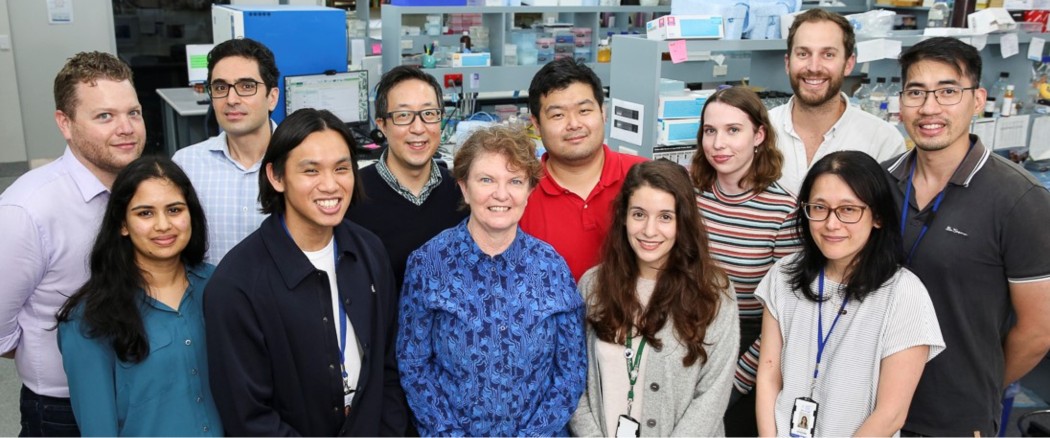
RANZCO NSW Branch Grant
Project Title:
A new inflammatory pathway for modulation in the retinal dystrophies
Chief Investigator:
Professor Robyn Jamieson
Co-Investigator:
Professor John Grigg
Aim
To assess phenotypic impact of a novel inflammatory pathway mutation using human induced pluripotent stem cell (iPSC)-retinal pigment epithelium (RPE) and retinal organoids (ROs) and test knockdown in inherited retinal dystrophies (IRDs).
Methods
Patient-derived inflammatory mutant iPSCs, retinal dystrophy patient iPSCs and controls were differentiated to RPE and ROs and characterised using cytokine, retinal and ciliary markers.
CRISPR/Cas9 was used to knockout specific inflammatory factors in patient- derived retinal dystrophy mutant lines, and biomarkers assessed in the differentiated lines.
Key results
Patient-derived inflammatory mutant and retinal dystrophy iPSC-RPE and RO lines were characterised, and cytokine and retinal biomarkers of disease identified. CRISPR/Cas9 gene editing knocked out specific inflammatory factors in patient-derived iPSC lines. Upon differentiation of the patient-derived mutant lines, disease biomarkers were modulated in response to the CRISPR created changes in inflammatory factor expression.
Conclusion
Human iPSCs differentiated to RPE and ROs provide a valuable model system to investigate disease mechanisms in retinal diseases. Investigation of the novel inflammatory pathway reveals biomarkers and approaches useful for development of new therapy applications and evaluation in the retinal dystrophies.
Implications for Clinical Practice/Science and Future Research
iPSC-RPE and RO studies led to eligibility for clinical gene therapy and resolution of previously unsolved genetic variants. Impact of modulation of the novel inflammatory pathway will be investigated in additional types of retinal dystrophies.
Conference Abstracts
1. Nash BM, et al. ARVO. May, 2021;
2. Chahine Karam F et al. ARVO. May, 2021;
3. Sabri et al, EMCR Symposium (1st Prize), Westmead Precinct, Dec, 2021;
4. Jamieson et al, RANZCO Symposium, Mar 2022
Lay summary of outcomes
Patient-derived stem cells differentiated to retinal tissues are valuable in determining eligibility for novel genetic therapies, understanding disease mechanisms including inflammatory pathways, and testing novel therapies in the IRDs.